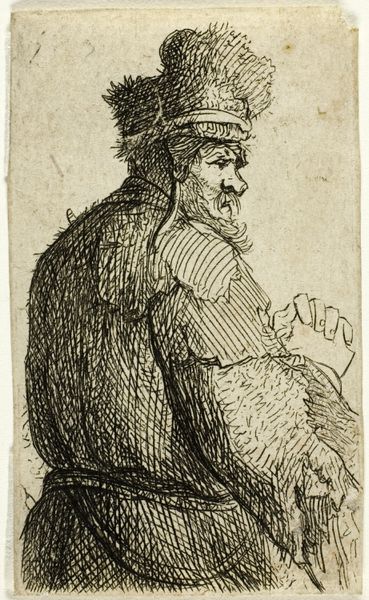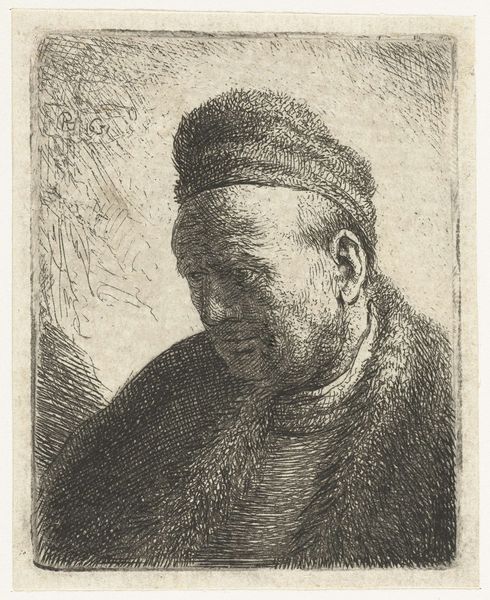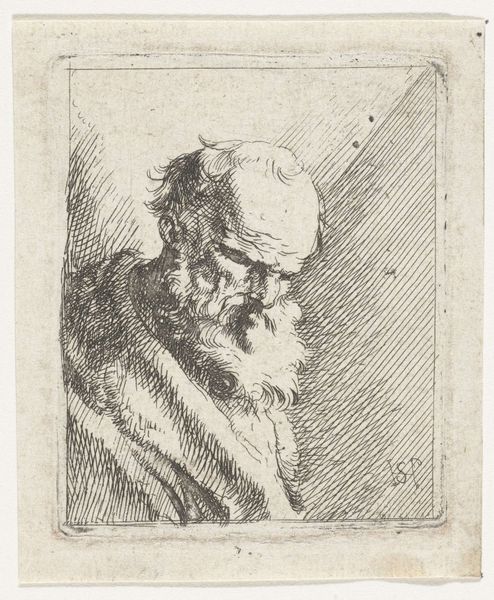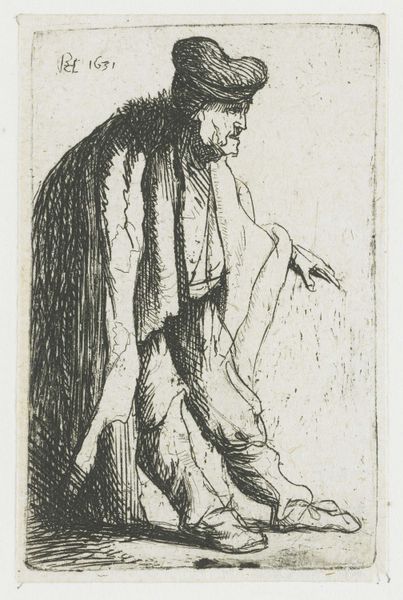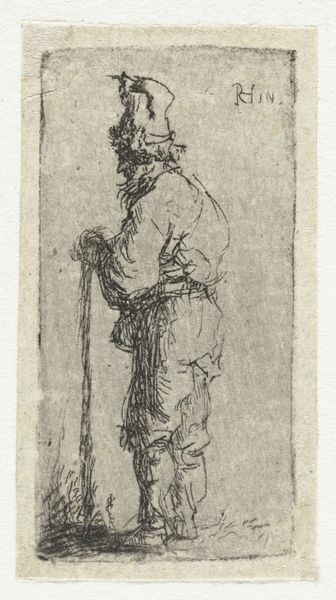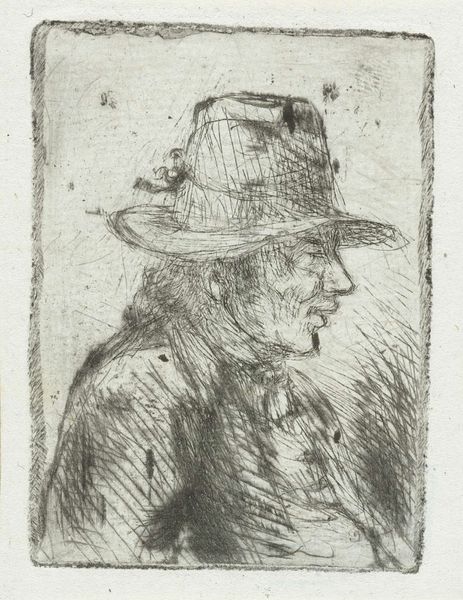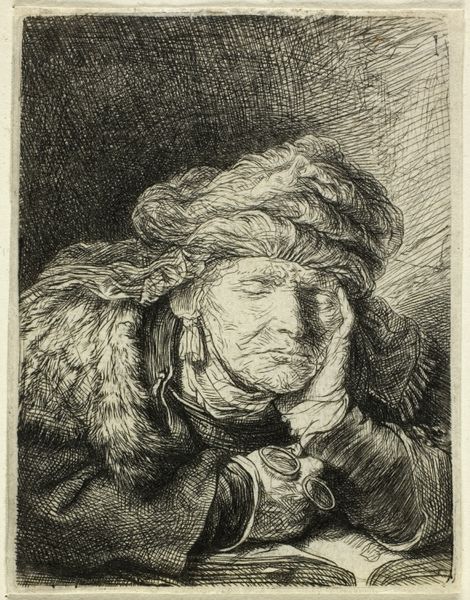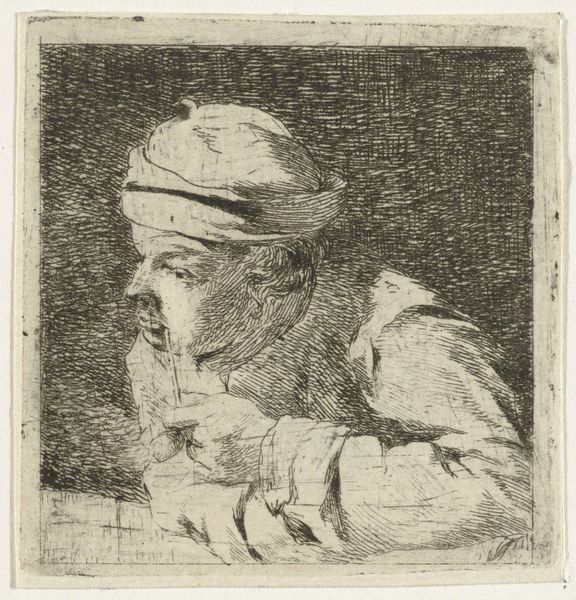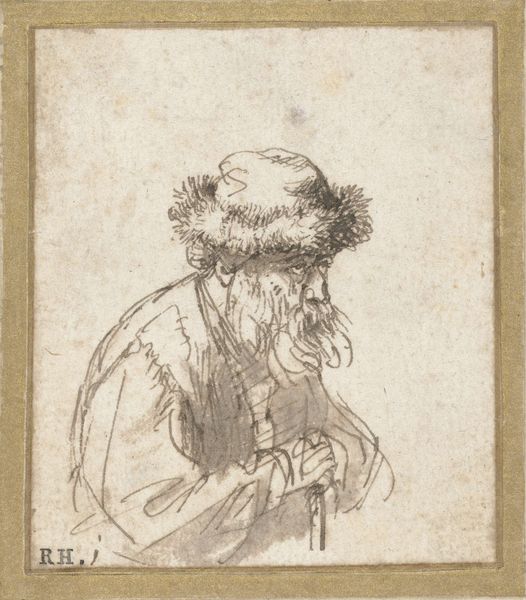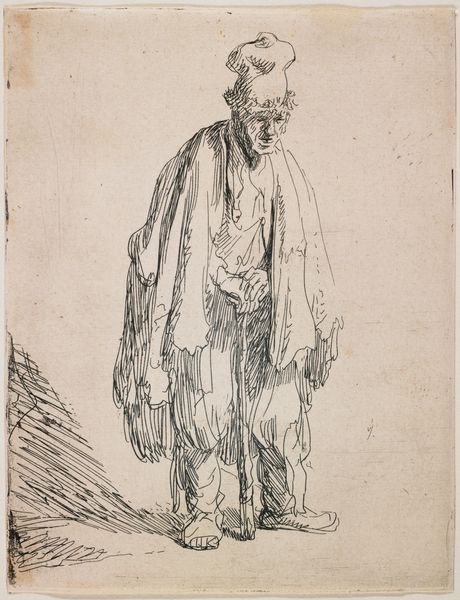
print, etching
#
portrait
#
baroque
#
dutch-golden-age
# print
#
etching
#
history-painting
Dimensions: height 73 mm, width 43 mm
Copyright: Rijks Museum: Open Domain
Editor: This is Rembrandt van Rijn's "Old Man, Seen from Behind," an etching from around 1629, housed in the Rijksmuseum. It’s an intriguing image, partially because of the man’s elaborate headwear, but mainly because his face is in profile facing away, making him somehow vulnerable. What do you see in this piece? Curator: The "Old Man" connects to Rembrandt’s broader exploration of aging and character during the Dutch Golden Age. This etching technique democratized image production, making art more accessible to a burgeoning middle class. We must consider how this imagery helped shape societal attitudes towards age and wisdom at a time when social structures were shifting. What kind of impression do you think such imagery had on Dutch society? Editor: That's an interesting angle – considering the shift in how art was being consumed at the time. His headwear gives him a sort of noble appearance. But it feels almost staged, playing on societal views on nobility. Curator: Exactly! The theatrical costume contrasts with his evident age, perhaps commenting on the superficiality of status. And consider the choice to depict him from behind. What does this imply about access to knowledge or understanding during that time period? Rembrandt positions the viewer outside, questioning what they're truly able to 'see' and comprehend. The popularity of etchings helped challenge older views that portraiture was only for the elite. Editor: So, it’s almost a social commentary on status, aging, and accessibility all wrapped into one etching, intended for the masses to ponder? It does seem much more powerful now thinking about the broader picture. Curator: Precisely! And that's the beauty of historical context. It opens up so many interpretive possibilities, revealing how artworks function as both reflections and shapers of their society.
Comments
rijksmuseum about 2 years ago
⋮
Another five small depictions of men’s heads, but this time it is certain that they did not originate as independent prints. Originally, they were all on the same copperplate. After Rembrandt cut up the plate, he completed each print individually. This working method was unusual and characterizes Rembrandt as an artist who often strayed off the beaten path.
Join the conversation
Join millions of artists and users on Artera today and experience the ultimate creative platform.

